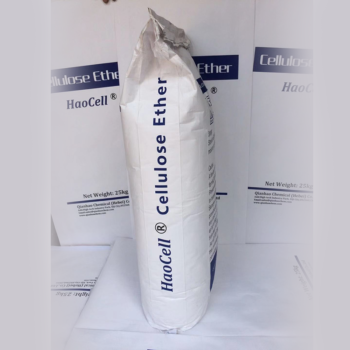The Benefits of HPMC as an Excipient in Drug Efficacy Enhancement
The pharmaceutical industry is constantly striving to develop new and improved drugs that are more effective and have fewer side effects. One important aspect of drug development is the selection of excipients, which are inactive substances that are added to a drug formulation to improve its stability, bioavailability, and overall efficacy. One such excipient that has gained significant attention in recent years is hydroxypropyl methylcellulose (HPMC).
HPMC is a semi-synthetic polymer derived from cellulose, a natural polymer found in the cell walls of plants. It is widely used in the pharmaceutical industry as a thickening agent, binder, and film-forming agent. However, its role as an excipient goes beyond these basic functions. HPMC has been found to enhance drug efficacy in several ways.
Firstly, HPMC can improve the solubility and dissolution rate of poorly soluble drugs. Many drugs have low solubility in water, which can limit their absorption and bioavailability. HPMC can form a gel-like matrix when hydrated, which can increase the solubility of poorly soluble drugs by enhancing their dispersibility. This improved solubility leads to faster dissolution rates and higher drug concentrations in the bloodstream, resulting in improved drug efficacy.
Secondly, HPMC can act as a sustained-release agent, allowing for controlled drug release over an extended period of time. This is particularly useful for drugs that require a constant and prolonged therapeutic effect. HPMC forms a gel layer around the drug particles, which slows down their release and prolongs their action. This sustained-release mechanism ensures that the drug remains in the body for a longer duration, reducing the frequency of dosing and improving patient compliance.
Furthermore, HPMC can protect drugs from degradation. Some drugs are susceptible to degradation in the harsh acidic environment of the stomach. HPMC can form a protective barrier around the drug particles, preventing their exposure to gastric acid and enzymes. This protective effect ensures that the drug remains intact until it reaches the site of absorption, increasing its bioavailability and efficacy.
In addition to its direct effects on drug efficacy, HPMC also offers several other benefits. It is non-toxic, biocompatible, and biodegradable, making it a safe and environmentally friendly excipient. It is also compatible with a wide range of active pharmaceutical ingredients and can be easily incorporated into various drug formulations. Its versatility and ease of use make it a popular choice among formulators.
In conclusion, HPMC plays a critical role as an excipient in enhancing drug efficacy. Its ability to improve drug solubility, act as a sustained-release agent, and protect drugs from degradation make it an invaluable tool in drug development. Furthermore, its non-toxic nature, biocompatibility, and compatibility with various drug formulations make it a preferred choice among formulators. As the pharmaceutical industry continues to strive for more effective and safer drugs, the importance of HPMC as an excipient cannot be overstated.
HPMC: A Versatile Excipient for Improving Drug Performance
The pharmaceutical industry is constantly striving to develop new and improved drug formulations that are more effective and efficient in treating various diseases and conditions. One crucial aspect of drug development is the selection of suitable excipients, which are inactive substances that are added to the drug formulation to enhance its stability, bioavailability, and overall performance. Among the various excipients available, Hydroxypropyl Methylcellulose (HPMC) has emerged as a versatile and highly effective excipient that plays a critical role in enhancing drug efficacy.
HPMC is a semi-synthetic polymer derived from cellulose, a natural substance found in the cell walls of plants. It is widely used in the pharmaceutical industry due to its unique properties, including its ability to form a gel-like matrix when hydrated. This gel-like matrix acts as a barrier, preventing the drug from being released too quickly, thus ensuring controlled and sustained drug release. This property is particularly beneficial for drugs that require a prolonged release profile, such as those used in the treatment of chronic conditions.
In addition to its controlled release properties, HPMC also improves drug solubility and bioavailability. Many drugs have poor solubility, which can limit their absorption and effectiveness in the body. By incorporating HPMC into the drug formulation, the solubility of the drug can be significantly enhanced. HPMC forms a protective layer around the drug particles, preventing them from aggregating and increasing their surface area, which in turn improves their dissolution rate and bioavailability.
Furthermore, HPMC acts as a binder, ensuring the cohesion and integrity of tablet formulations. Tablets are one of the most common dosage forms used in the pharmaceutical industry, and their mechanical strength is crucial to prevent breakage or crumbling during handling and transportation. HPMC acts as a binder by forming a film around the drug particles, providing them with a protective coating and improving tablet hardness and durability.
Another important role of HPMC as an excipient is its ability to modify the rheological properties of drug formulations. Rheology refers to the flow behavior of a substance, and it plays a crucial role in the manufacturing process of pharmaceutical products. HPMC can be used to increase the viscosity of liquid formulations, making them easier to handle and preventing sedimentation or settling of particles. On the other hand, it can also be used to decrease the viscosity of gels or ointments, improving their spreadability and ease of application.
Moreover, HPMC is a biocompatible and biodegradable excipient, making it safe for use in pharmaceutical formulations. It has been extensively studied and approved by regulatory authorities worldwide, ensuring its suitability for use in various drug products. Its non-toxic nature and compatibility with a wide range of active pharmaceutical ingredients make it an ideal excipient for enhancing drug efficacy.
In conclusion, HPMC plays a critical role as an excipient in enhancing drug efficacy. Its unique properties, including controlled release, improved solubility and bioavailability, tablet binding, rheological modification, and biocompatibility, make it a versatile and highly effective excipient in the pharmaceutical industry. The use of HPMC in drug formulations not only improves the performance of the drug but also ensures its safety and efficacy. As the pharmaceutical industry continues to advance, the critical role of HPMC as an excipient will undoubtedly remain at the forefront of drug development and formulation.
Exploring the Role of HPMC in Enhancing Drug Efficacy
The pharmaceutical industry is constantly striving to develop new and improved drugs that are more effective and have fewer side effects. One important aspect of drug development is the selection of excipients, which are inactive substances that are added to a drug formulation to improve its stability, bioavailability, and overall efficacy. One such excipient that has gained significant attention in recent years is hydroxypropyl methylcellulose (HPMC).
HPMC is a semi-synthetic polymer derived from cellulose, a natural substance found in the cell walls of plants. It is widely used in the pharmaceutical industry as a thickening agent, binder, and film-forming agent. However, its role as an excipient goes beyond these basic functions. HPMC has been found to enhance drug efficacy in several ways.
Firstly, HPMC can improve the solubility and dissolution rate of poorly soluble drugs. Many drugs have low aqueous solubility, which can limit their absorption and bioavailability. HPMC forms a gel-like matrix when it comes into contact with water, which can increase the solubility of poorly soluble drugs by dispersing them more effectively. Additionally, HPMC can enhance the dissolution rate of drugs by reducing the surface tension of the dissolution medium, allowing for faster and more efficient drug release.
Secondly, HPMC can improve the stability of drugs, particularly those that are sensitive to moisture or light. HPMC forms a protective barrier around the drug particles, preventing them from coming into contact with moisture or oxygen. This can significantly extend the shelf life of drugs and ensure their efficacy over a longer period of time. Furthermore, HPMC can act as a stabilizer for drugs that are prone to degradation or chemical reactions, helping to maintain their potency and effectiveness.
Another important role of HPMC as an excipient is its ability to control drug release. HPMC can be used to formulate sustained-release or controlled-release dosage forms, which release the drug over an extended period of time. This is particularly useful for drugs that require a constant and steady concentration in the bloodstream, such as those used to treat chronic conditions. By controlling the release rate of the drug, HPMC can ensure a more consistent and predictable therapeutic effect.
Furthermore, HPMC can improve the bioavailability of drugs by increasing their residence time in the gastrointestinal tract. When HPMC is ingested, it forms a viscous gel in the stomach, which slows down the transit of the drug through the gastrointestinal tract. This allows for better absorption of the drug and reduces the likelihood of it being metabolized or excreted before it can exert its therapeutic effect. Additionally, the gel-like nature of HPMC can protect the drug from the harsh acidic environment of the stomach, further enhancing its bioavailability.
In conclusion, HPMC plays a critical role as an excipient in enhancing drug efficacy. Its ability to improve solubility, enhance stability, control drug release, and increase bioavailability make it a valuable tool in drug formulation. The pharmaceutical industry continues to explore the potential of HPMC and other excipients in improving drug delivery and patient outcomes. As research and development in this field progresses, we can expect to see even more innovative drug formulations that harness the power of HPMC to enhance drug efficacy.
Q&A
1. What is HPMC?
HPMC stands for Hydroxypropyl Methylcellulose. It is a commonly used pharmaceutical excipient, which is a substance added to a drug formulation to enhance its stability, solubility, and bioavailability.
2. How does HPMC enhance drug efficacy?
HPMC acts as a thickening agent, providing viscosity to liquid formulations and improving the uniformity of solid dosage forms. It also acts as a film-forming agent, aiding in the controlled release of drugs. Additionally, HPMC can improve drug dissolution and absorption, leading to enhanced drug efficacy.
3. What are the benefits of using HPMC as an excipient?
Using HPMC as an excipient offers several benefits. It improves drug stability, enhances drug solubility, and promotes uniform drug distribution. HPMC also provides controlled drug release, improves bioavailability, and can protect drugs from degradation. Moreover, it is a safe and widely accepted excipient in the pharmaceutical industry.


